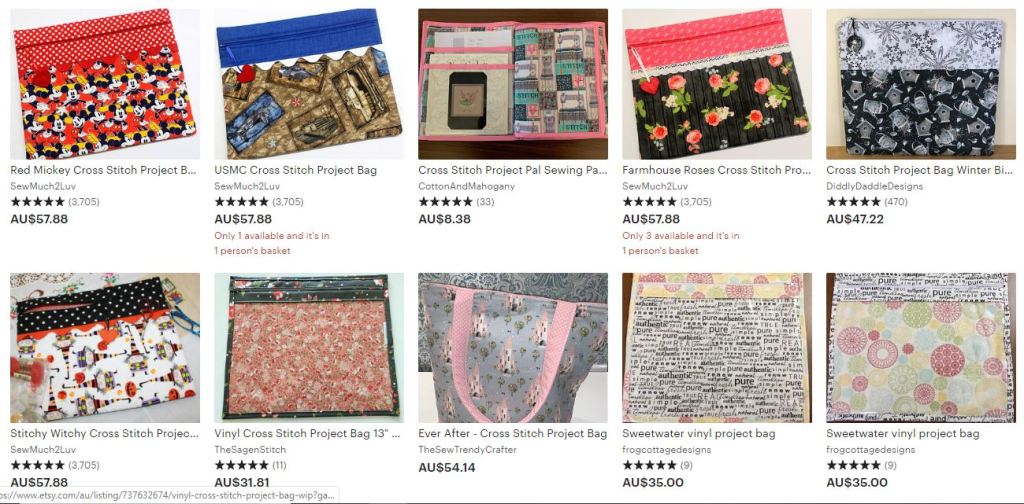Hi Everyone
The creative writing bug left me for a while and I felt that I didn’t have much to write about regarding cross stitch and what I’ve been doing – especially things that would make any of the posts interesting!
Thankfully it doesn’t mean I’ve been idle, because I cleaned out some of my cupboards and found some quilting fabric I’d forgotten about and tried my hand at making some project bags:
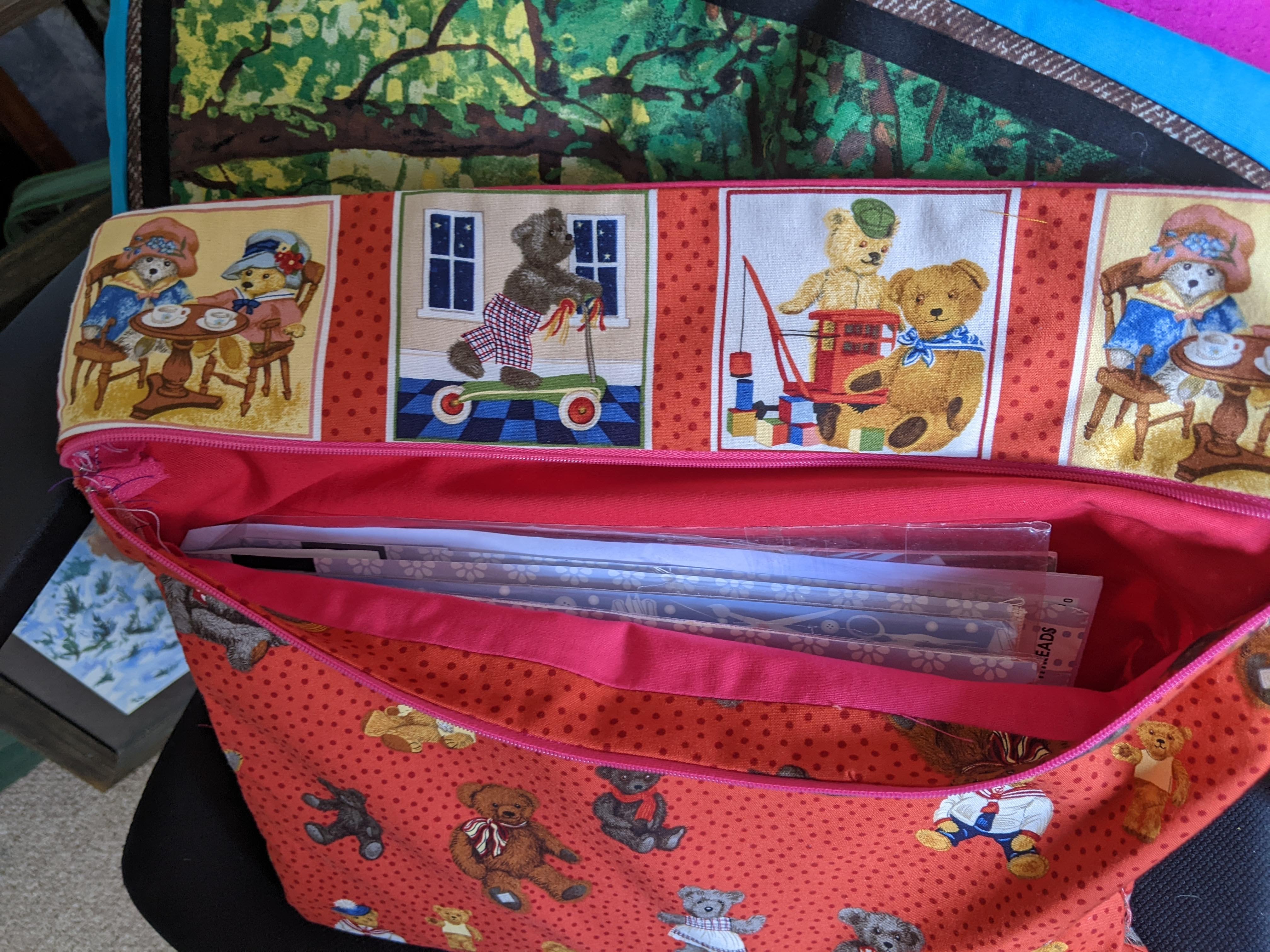
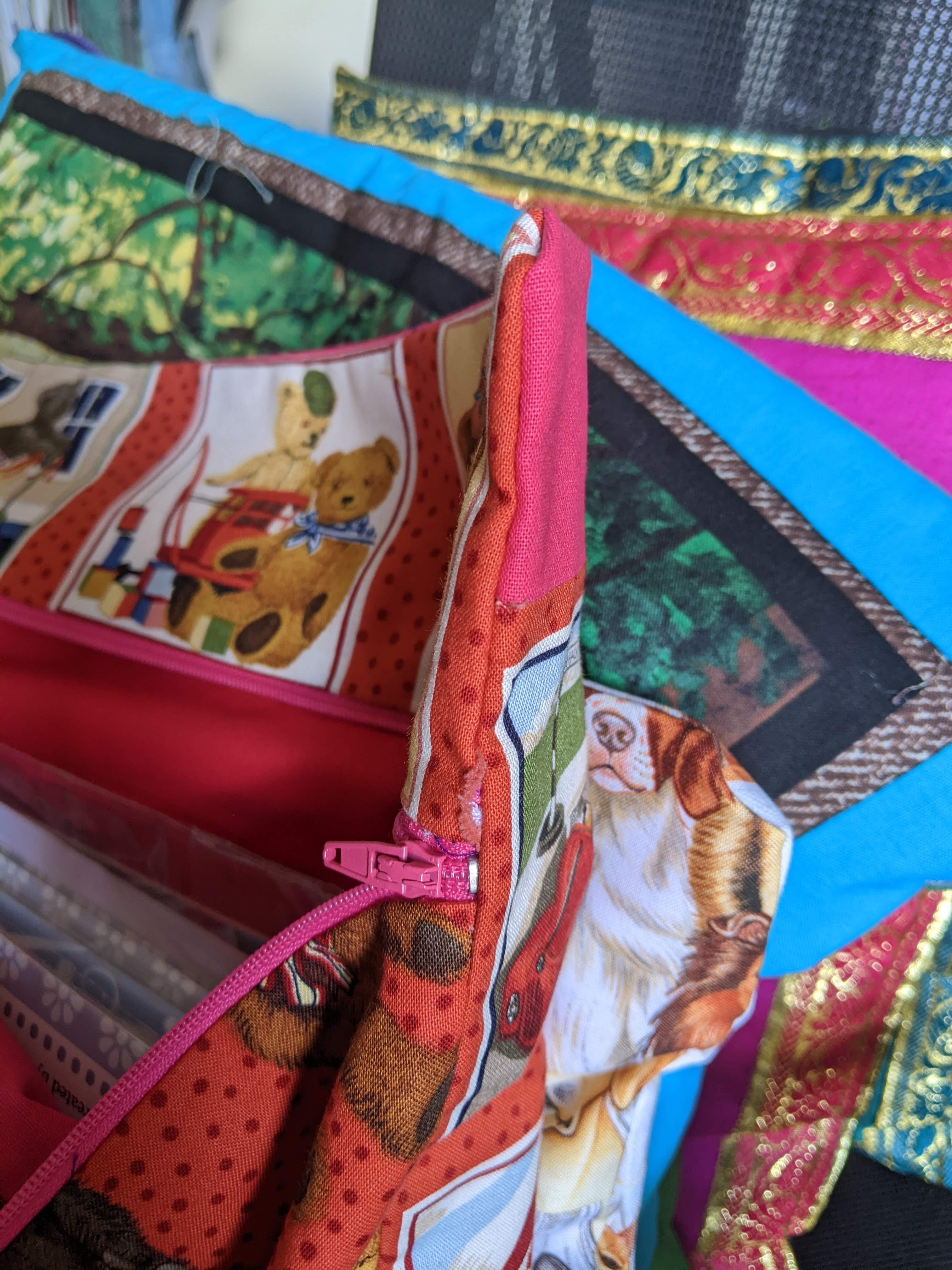
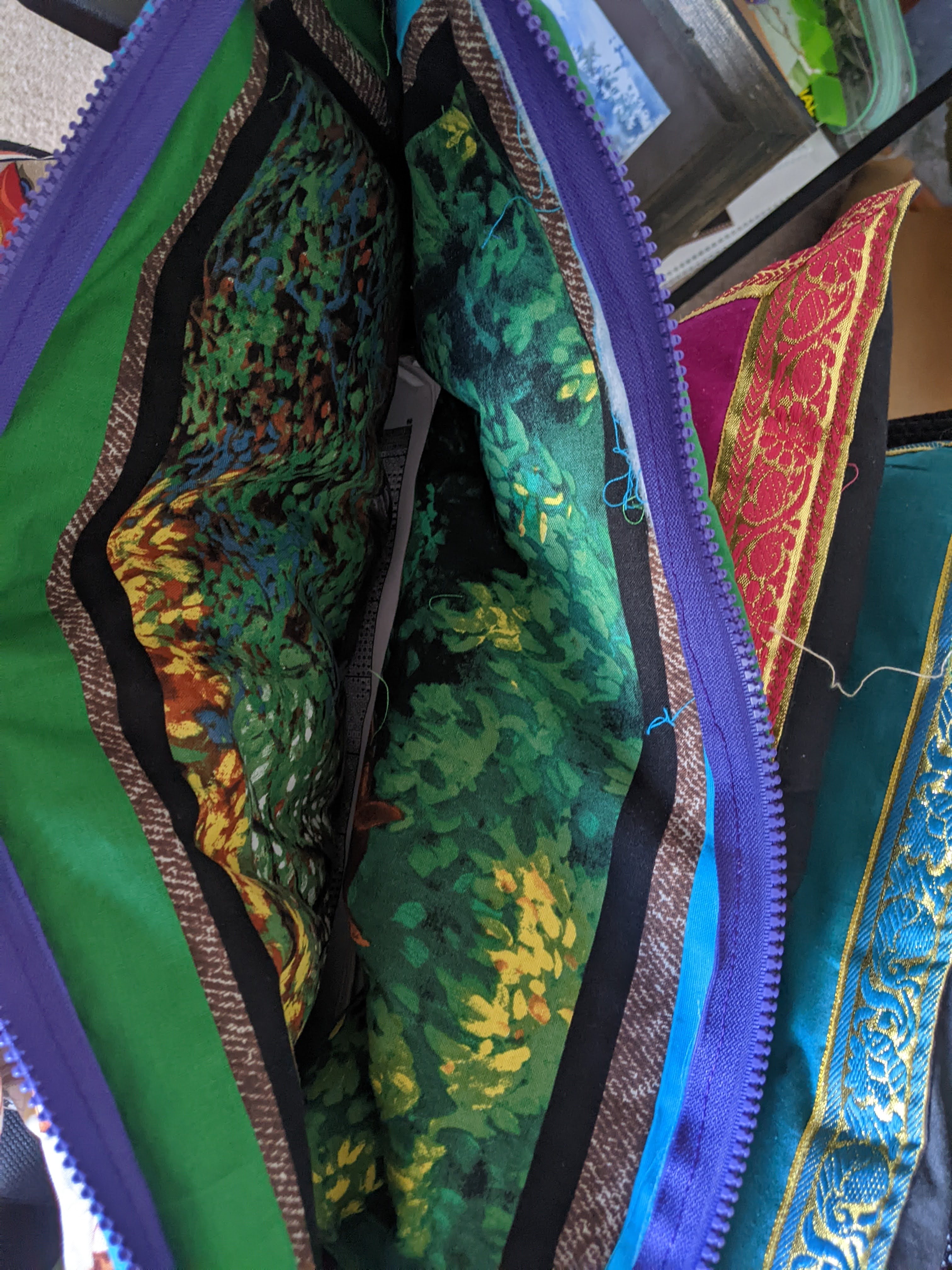
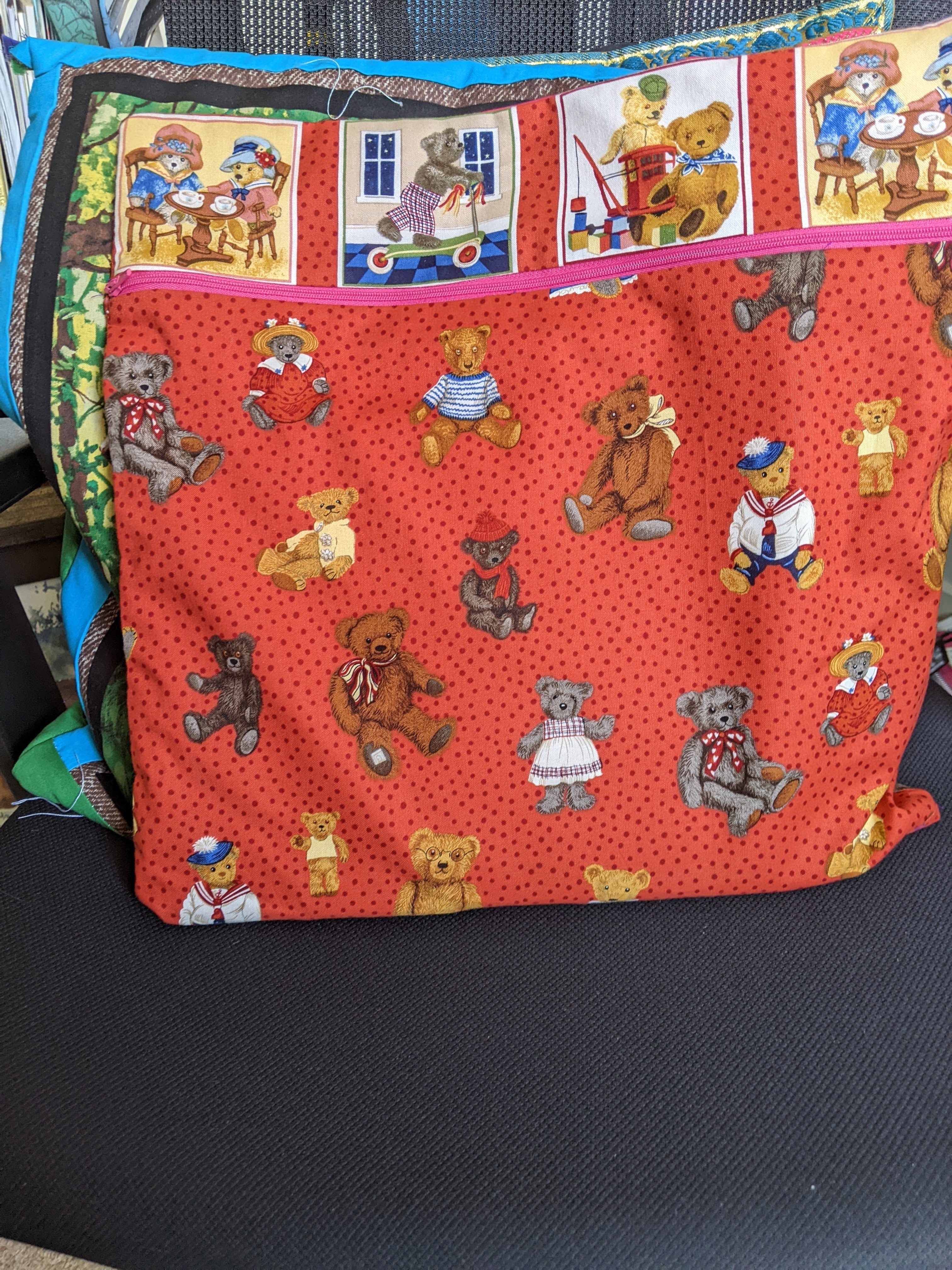
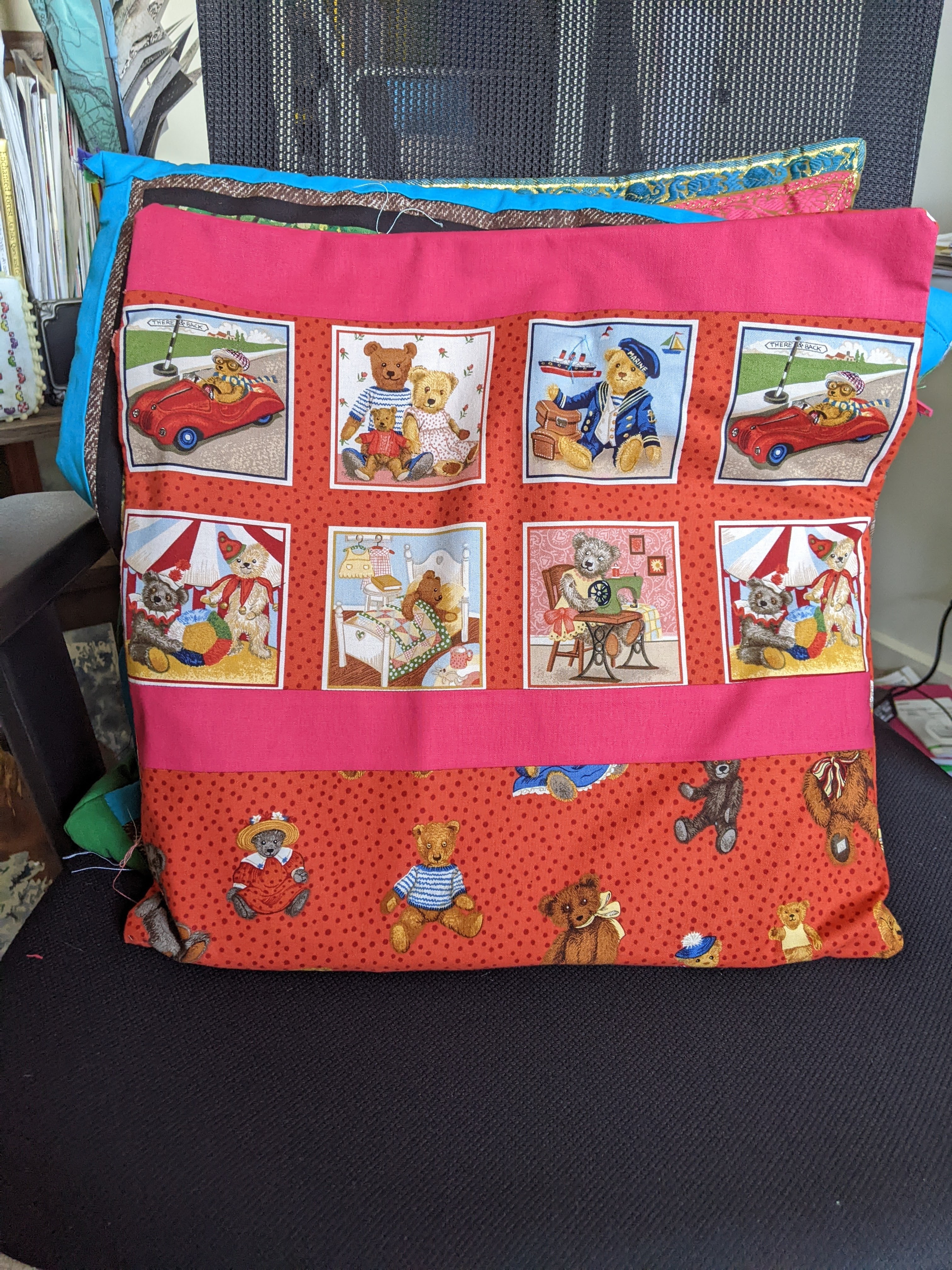

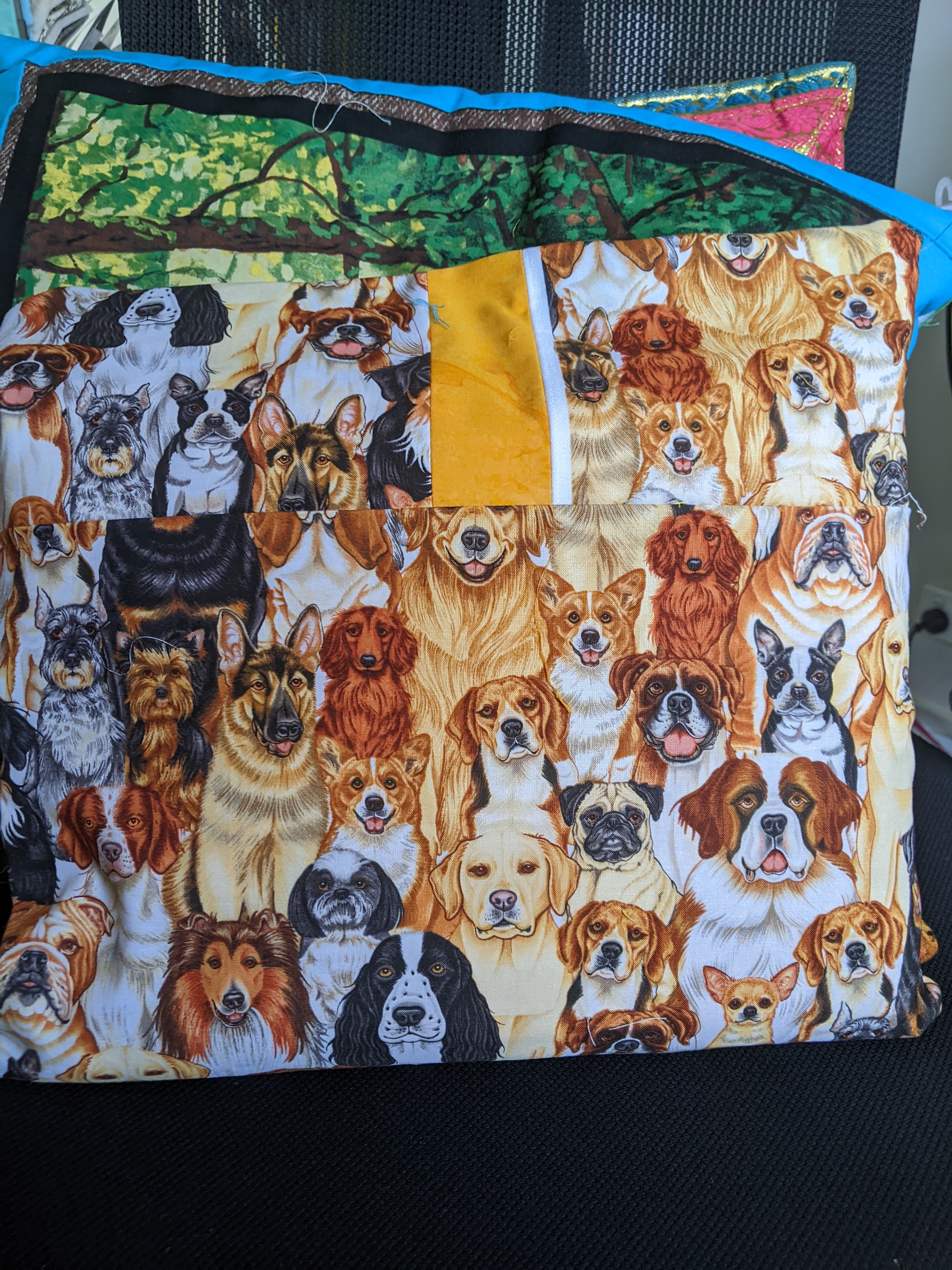
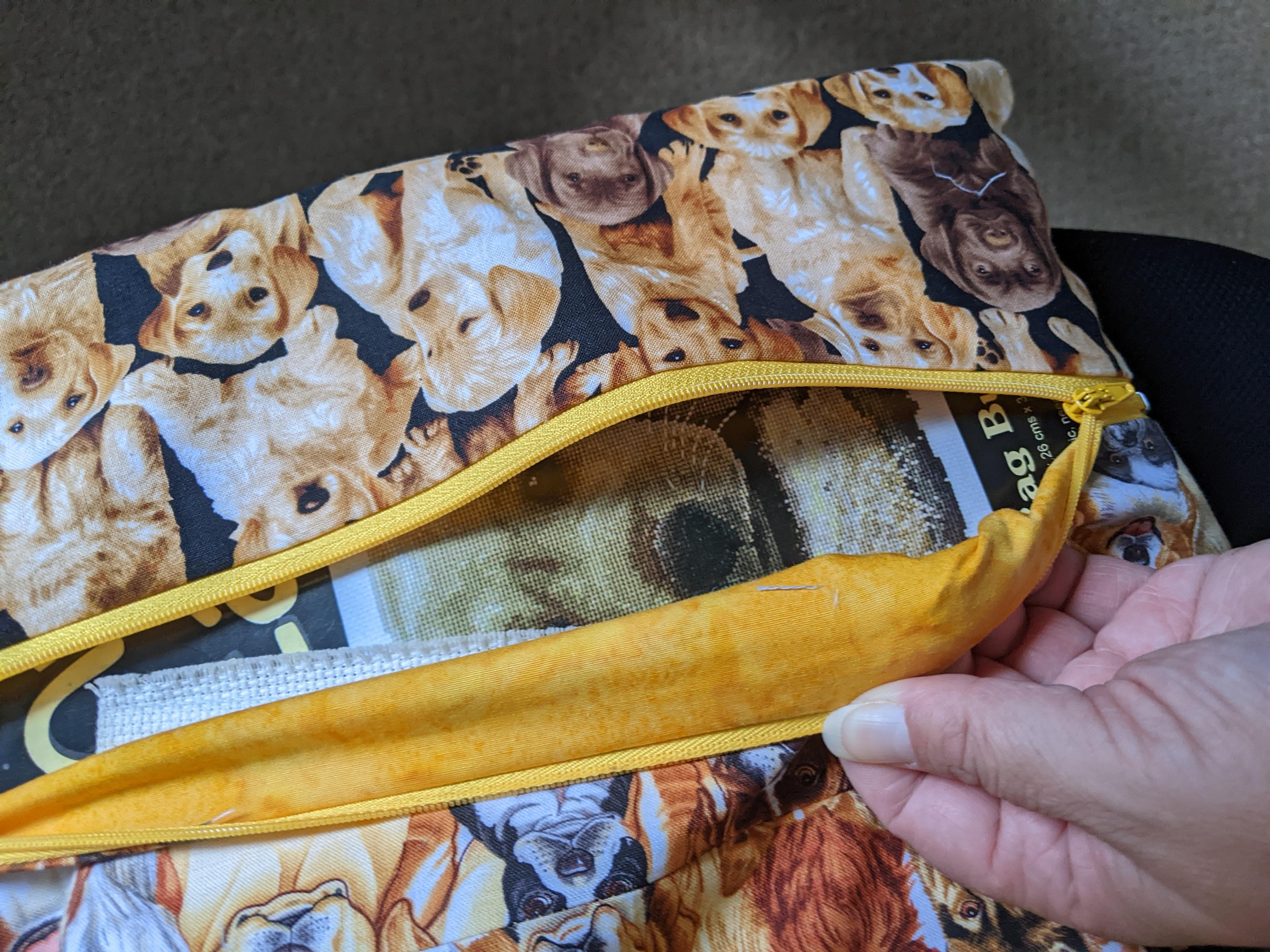
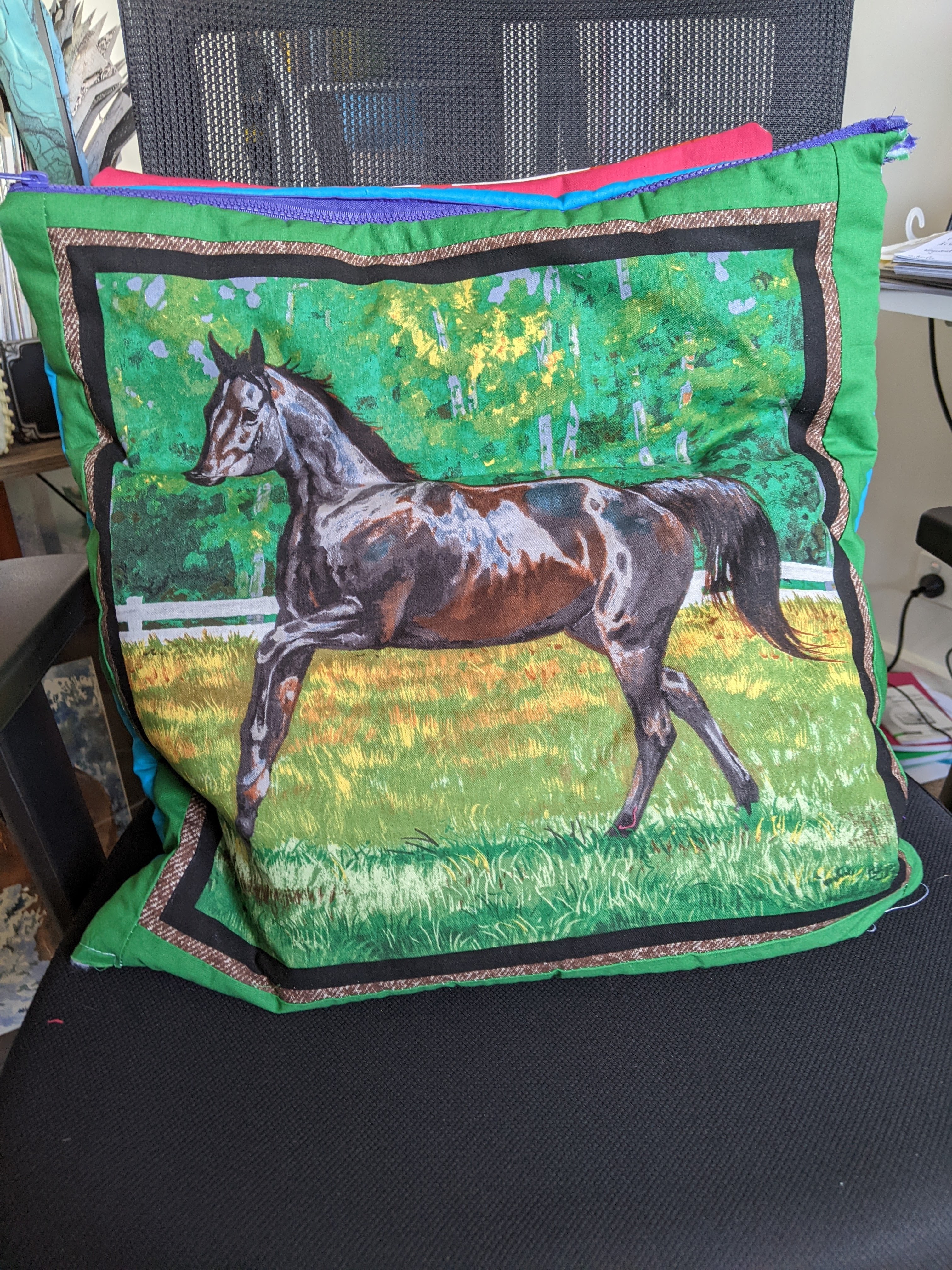
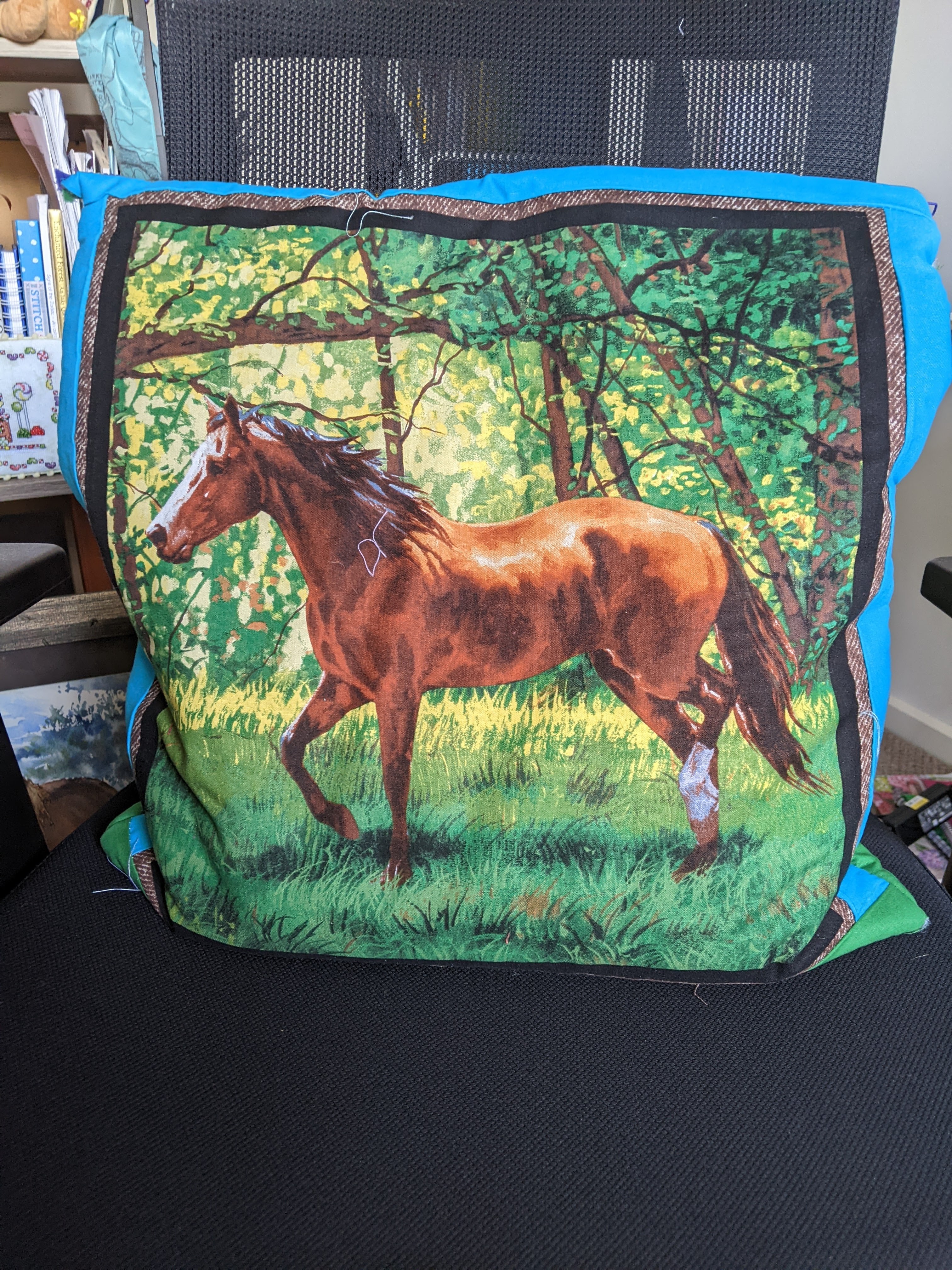
So far I’ve created three bags and thankfully each time I’ve improved and learnt my lessons from the previous bag – to then create new lessons for future bags! The above images show both sides of the bags and the inside of them where I’ve tried to line them with some fabric as a point of interest.
The additional aim of these bags is to help me keep my physical cross stitch patterns organised. The horse, teddy bears and dog project bags hold cross stitch patterns on those things – horses, teddy bears and dogs.
My eventual aim is to attach cards to the zippers that will say what the project is inside, as the need arises.
Lesson 1 – Padding’s a nice idea but the type of padding used is more important, if it’s going to be used
The positive is that I successfully attached my first zip to some fabric using a special foot that came with my sewing machine!
The negative is that I’m not going to use left-over batting I used for my cross stitch quilt! As much as I tried to keep things as lined up and straight as possible, the padding gave the bag a mind of its own when it came time to stitching – even when I was using pins! If I due use padding again, I’ll definitely use something thinner and use special quilting clips like the ones below (that I could purchase from a craft store):
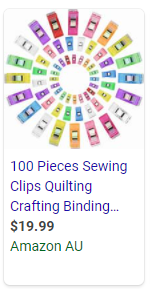
Lesson 2 – Securing the ends of the zipper will help with opening and closing
The images below are from the first bag I created and it opens and closes smoothly. The ends however aren’t neat and they need to be. That’s partially due to the type of zipper I used for this bag and the other part is due to me ‘winging’ it and not following a specific pattern. My initial logic was – it’s just a bag, it should be simple enough!
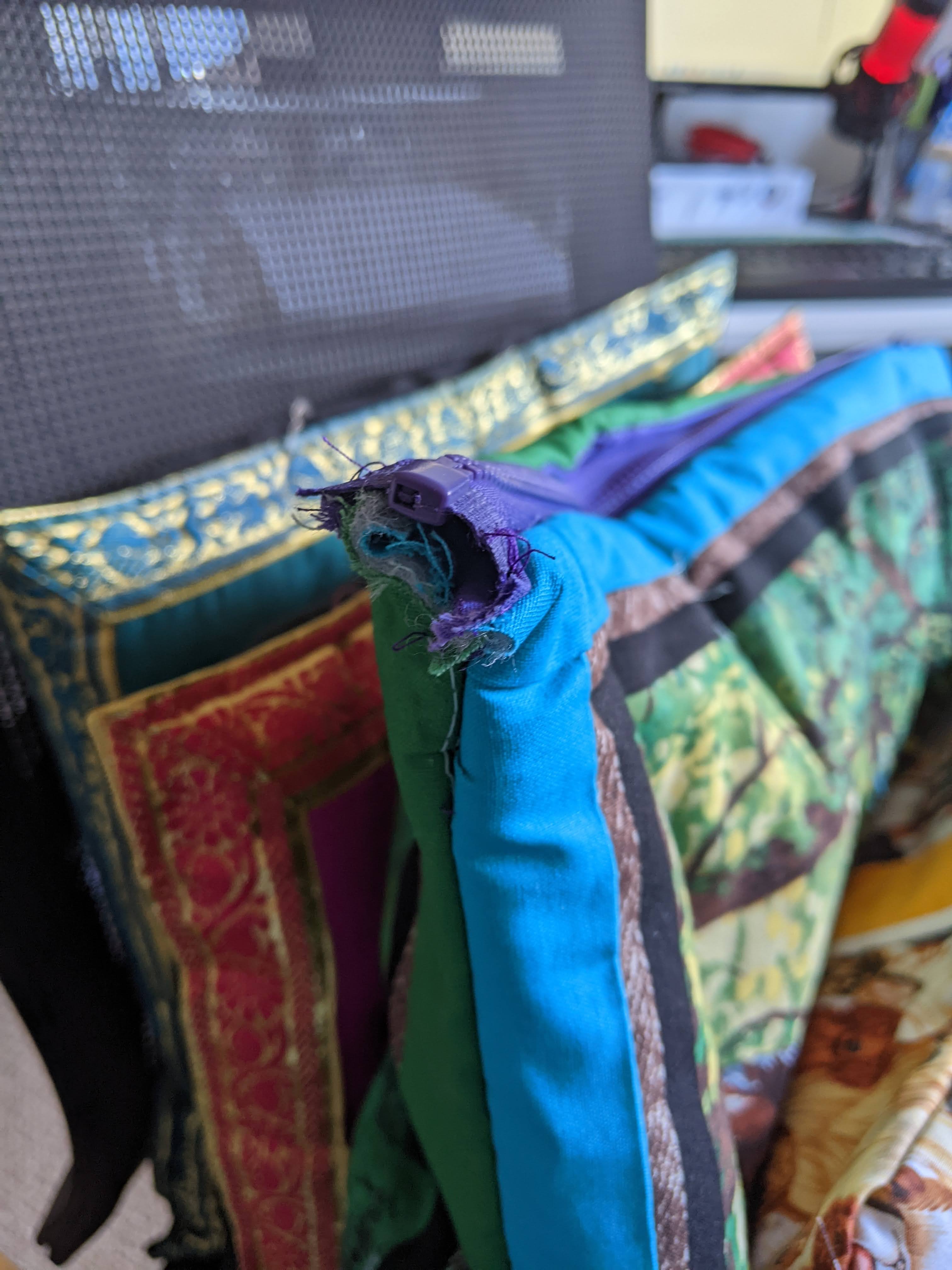
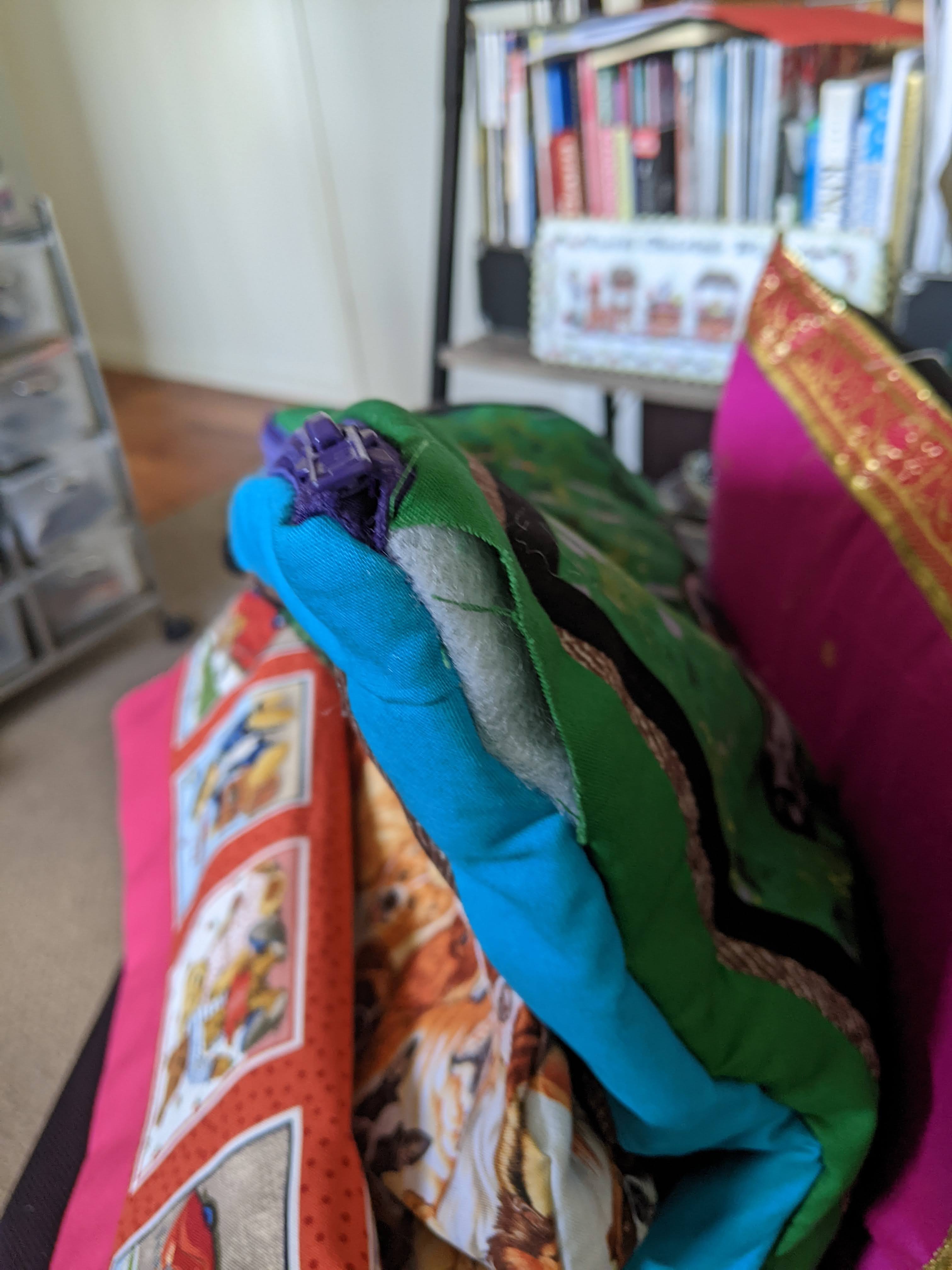
Lesson 3 – Following a pattern and paying attention to that pattern is important
To toot my own horn, I’m good at writing procedures and instructions. I have trouble following instructions and procedures though. It does depend upon what I’m doing and the complexity of what I need to do. If I have to do something practical like making a project bag, then I find it easier to follow a series of images than written instructions.
For the second bag, I tried to follow a tutorial that Elizabeth Ann Can Stitch posted about a year ago. It worked reasonably well to begin with. There was a bit of re-watching certain parts to be sure I was on the right track. The hardest part I found was attaching the front to the back. That was partially due to me getting to the point where I thought that I was okay and on the right track and didn’t need to keep re-watching!
Because of this thought pattern, I had to get creative at times and add more fabric to the bag to make it all line up!
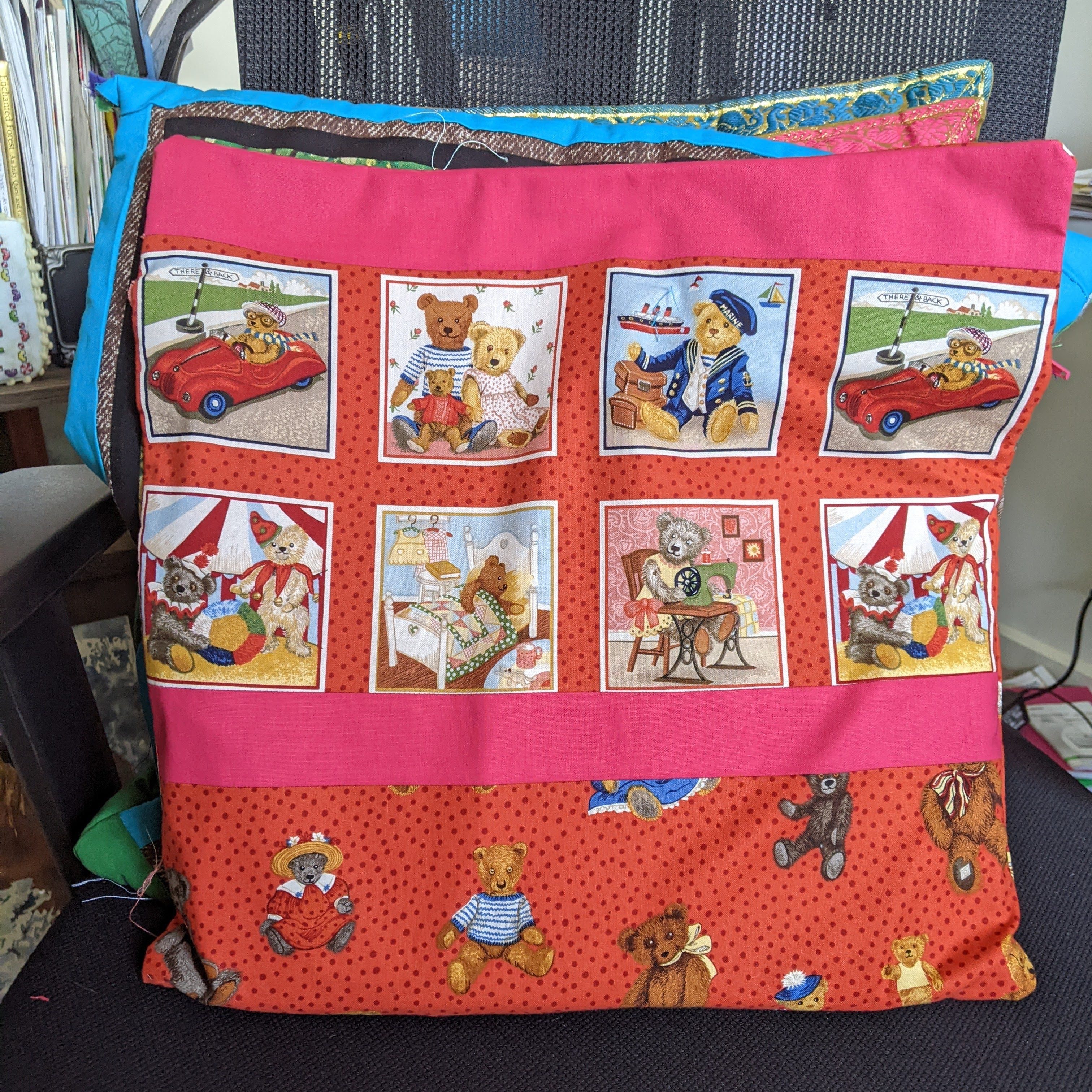
This is where and why I can never be a builder or work in construction where supplies are very expensive. As much as I measure twice and cut once, I can measure 10 times and cut once and still get it wrong!
The positive to come out of this bag is my improved zipper attachment to the bag – much to the detriment of a needle on my sewing machine that was sacrificed as part of the sewing process. I had learnt from my first bag to really keep my seams straight and make sure everything lined up. For the majority of the bag I was able to do this and that’s when the needle broke when I was sewing a part of the zipper. However, there was still one part of the bag where I hadn’t quite gotten the whole seam of the fabric, as shown below:
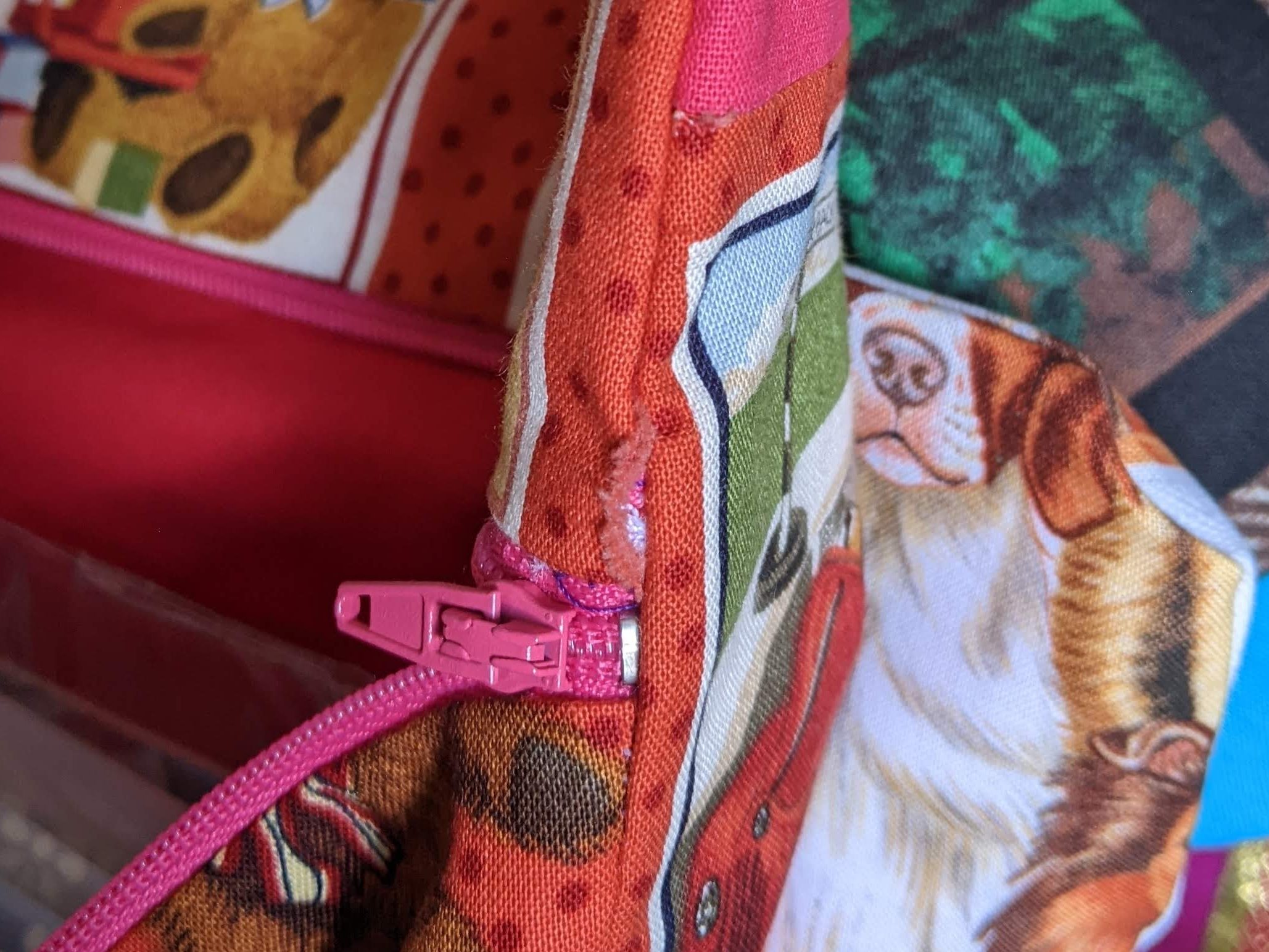
Lesson 4 – Converting inches to centemetrs to ensure precision of the pattern
One of the things I struggled with creating the second bag was all of the measurements were in inches. Normally that wouldn’t be a problem because I have a tape that uses both types of measurements. The challenge came when I wanted to use a specific panel of fabric that wasn’t to the inch or half inch and my ability to determine if it’s a quarter of an inch, an eighth of an inch etc. That’s when I started using a mixture of inches and centemetres and noting down the measurements where I adjusted them. That’s when the additional fabric had to be added to the bag!
Lesson 5 – Leaving it to memory then winging it
For the most part, I’m really happy with how my third bag turned out since I had made some adjustments to the dimensions and I was going by memory for how to assemble it. I’m happy with how neat the seams are and I don’t have any frayed edges where I’ve not been able to capture all of the edges!
You may notice that the centre image below shows a yellow vertical strip of fabric just above the Golden Retreaver’s head. That’s where I needed to get creative and try and use some of the fabric I’d already cut up.



Learning my lesson from breaking a sewing machine needle from the second bag, I wanted to be safe than sorry but also have a really nice and neat bag for my third one. I achieved that by not breaking another needle and allowed some extra fabric either side of the zipper to try and make it neat.
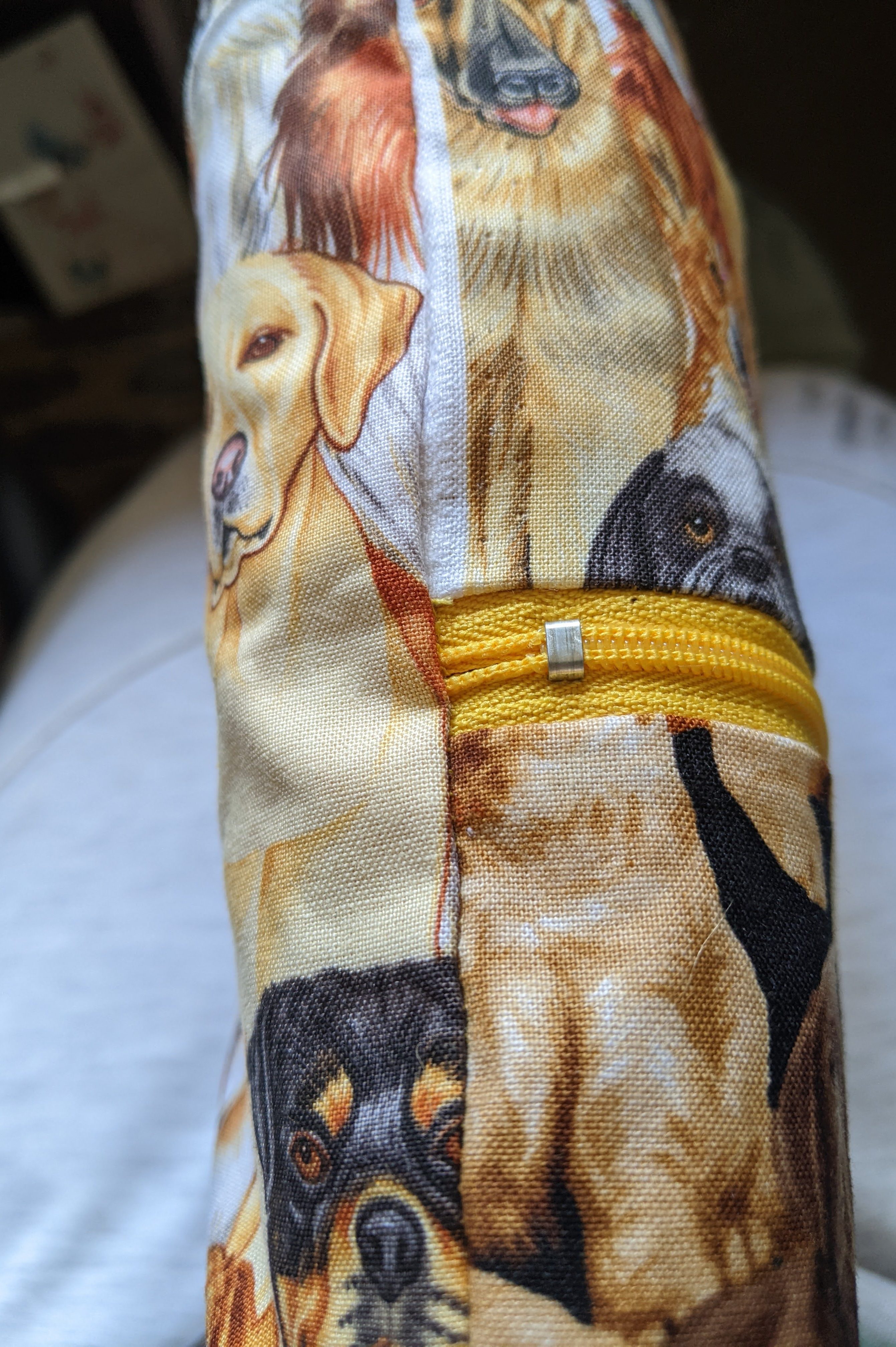
I’m not completely happy with this end, but it may be something for the fourth bag that I can improve on. I could add some extra fabric that covers this end, but something I can easily attach without breaking another needle!
Lesson 6 – Do I dare use clear vinal?
I haven’t purchased any yet but I’m considering it. I’ve seen on Flosstube that some people have project bags that have a clear panel of vinal at the front to help them see what project/s they have in the bag. I’ve even seen one creative endeavor where a Christmas stocking shaped project bag had been made and the creator had included clear vinal but in a pocket format, to enable the user to keep their floss/threads organised. To me that will be the ideal thing to do or / and create a bag that is large enough to fit my fishing tackle boxes that I use to store and organise the thread for my large, full coverage pieces. The box below is an example of how I use the tackle box and I’m using it for three different projects!
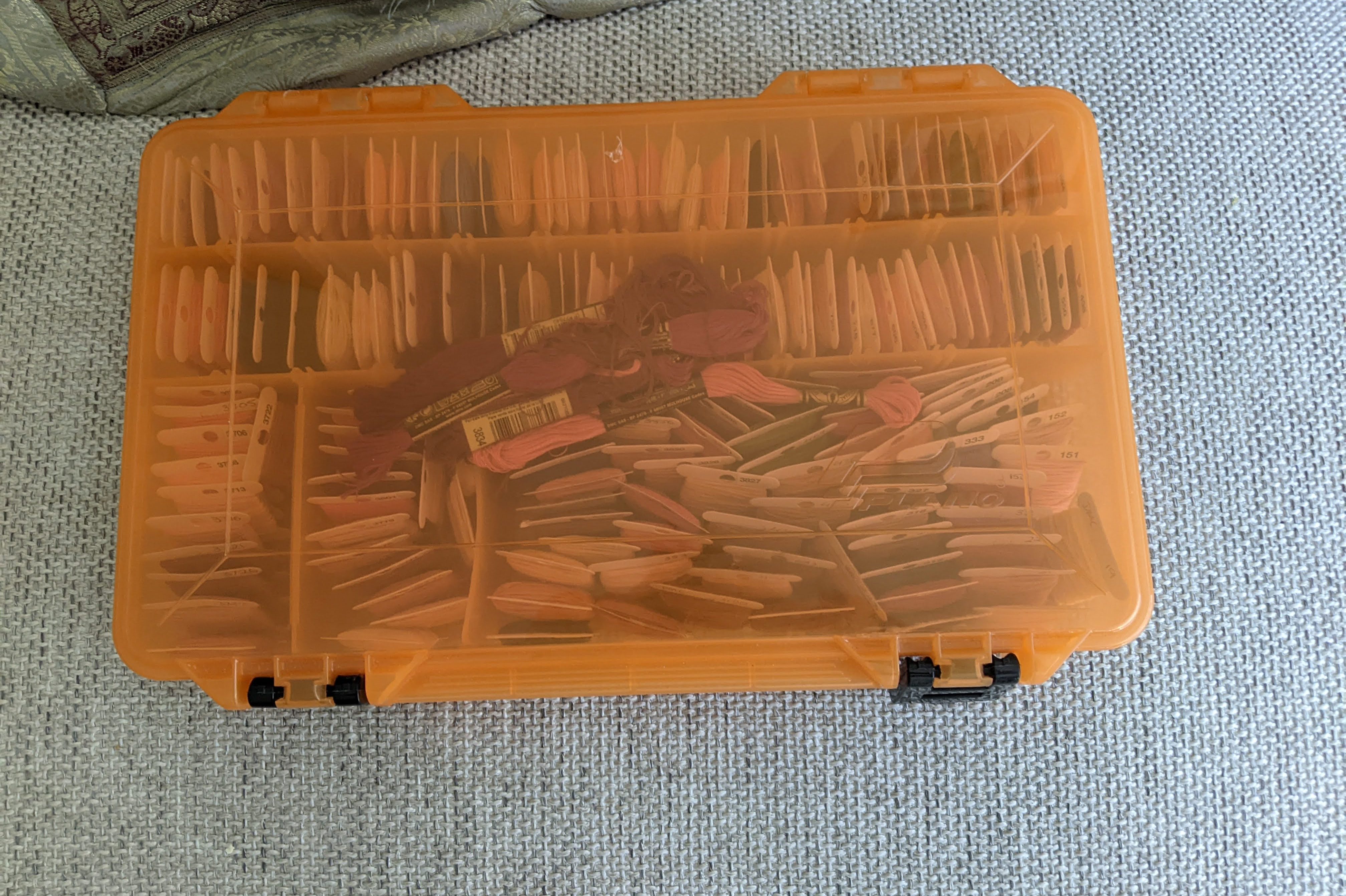
I hope you’ve found this read useful, if not entertaining! My aim is to write more posts for this year and interact with you all more!
In the meantime, you can catch up with me regarding my cross stitch progress and new patterns etc. on my Flosstube channel, The X Stitching Runner.
Until next time, happy stitching!





